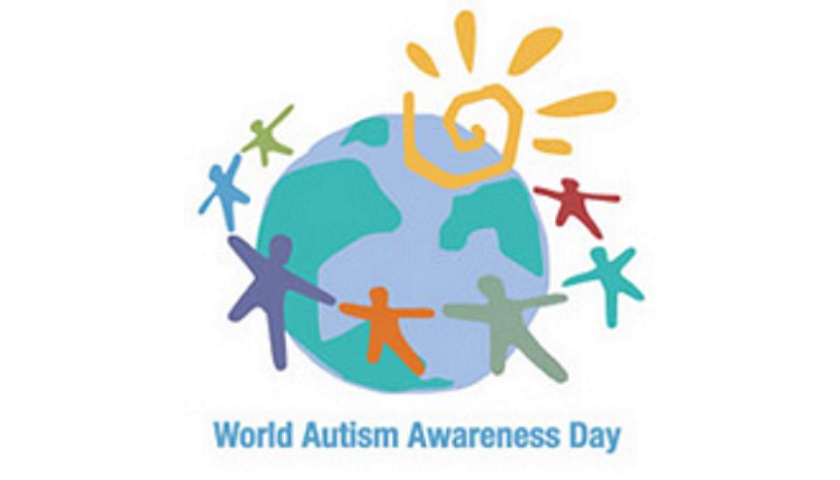There is no greater calling than to teach. There is no better activity for an association that represents educators than to help policymakers understand what our teachers experience on a daily basis.
It is important we also assist them in helping our educators meet the challenges they see and get the resources they need. This year our theme for our statewide conference at MTSU on June 30th this year is Ensuring Equity and Excellence in Education. On twitter we will be using the hashtag: #AllMeansAll. We will have Dr. Whitney Loring, a clinical psychologist on the Vanderbilt Kennedy Center Treatment and Research Institute for Autism Spectrum Disorders (TRIAD)’s Professional Development and Training team as a speaker to discuss Supporting Students with Autism Spectrum Disorders.
My friend (and fellow Cleveland, Tennessee native) Candy Alford-Price really made me aware of the emerging and growing issue of Autism. Autism is one of the fastest-growing developmental disorders in the United States. Autism spectrum disorder (ASD) is a group of developmental disabilities that can cause significant social, communication and behavioral challenges. The Centers for Disease Control and Prevention (CDC) reports many children are living with autism spectrum disorder (ASD), and they need services and support, now and as they grow into adolescence and adulthood.
For a number of reasons autism prevalence figures are growing. The definition of autism has been expanded along with a better diagnosis of the disorder. We know boys are nearly five times more likely than girls to have autism. The CDC released data on the prevalence of autism in the United States. This surveillance study identified 1 in 68 children (1 in 42 boys and 1 in 189 girls) have some form of autism. Whether this an accurate assessment or not, Dr. Stephanie Seneff, a senior research scientist at the MIT Computer Science and Artificial Intelligence Laboratory, says by 2025, half the children born in the United States will be diagnosed with autism. If that figure is even partially accurate, society better begin to prepare in earnest. The Autism Society estimates that the United States is facing almost $90 billion annually in costs for autism. Autism costs a family $60,000 a year on average. More importantly, there is no medical detection or cure for autism.
While significant, the data is more than just numbers, it is about real people, real families and our need as a society to address any challenge we meet head on. We are improving in identifying autistic people, as well as accepting them. Imagine the impact we can have on those whose lives are touched by autism every single day. We must recognize that all children are created in the image of God and have potential. However, as a culture, we must make certain the support and resources they need to realize that potential is available to educators and parents.
Autism is treatable. However, children do not “outgrow” autism. Studies show that early diagnosis and intervention lead to significantly improved outcomes. The CDC believes we must promote early identification of children with ASD. That burden is likely to fall on pediatricians, children’s hospitals and ultimately on public schools. We will need to design services for children and families affected by ASD, and increase professional learning and development for the professionals who provide services. Research will continue to be needed in this emerging field, as well as developing policies that promote and align with improved outcomes in health care and education for individuals with ASD.
April is Autism Awareness Month. Blue is the color used to identify Autism advocacy. World Autism Awareness Day, will be observed on Sunday, April 2, 2017 It was adopted by the United Nations to shine a bright light on autism as a growing global health priority. The objective is to increase knowledge and understanding of autism; recognize the talents and skills of people with autism, and; generate awareness to the needs of all people with autism. We agree: Light it up Blue!
###
JC Bowman is the Executive Director of Professional Educators of Tennessee, a non-partisan teacher association headquartered in Nashville, Tennessee. Follow him on Twitter @jcbowman. Permission to reprint in whole or in part is hereby granted, provided that the author and the association are properly cited.






Mr. Bowman thank you for covering this. Recently there has been greater awareness of Spectrum Disorders and recognizing early signs has become more efficient in recent years. As someone on the spectrum that was late diagnosed, it was a long difficult road. Although I had achieved a lot as a young adult, as you said it doesn’t go away. Knowing that I see the world a little bit differently has resulted in better cognitive behavioral therapy that allows me to better adapt myself to new environments that I would have otherwise avoided. I was a teacher in South America and was able to help other students on the spectrum. I even had around 5 students whose parents didn’t know they were autistic. We can recognize each other pretty easily and after informing the parents they were able to get the proper help and seemed relieved to finally understand why their child was a little bit different. We need to be careful as an ASD diagnosis shouldn’t give a child or adult a free pass to do whatever they please. Sub par disciplinary standards are one of the major problems I am noticing as a current trend. Discipline should be paramount in the academic environment to help students on the spectrum advance into adulthood. My family’s military background was a benefit in my adult success on the spectrum.